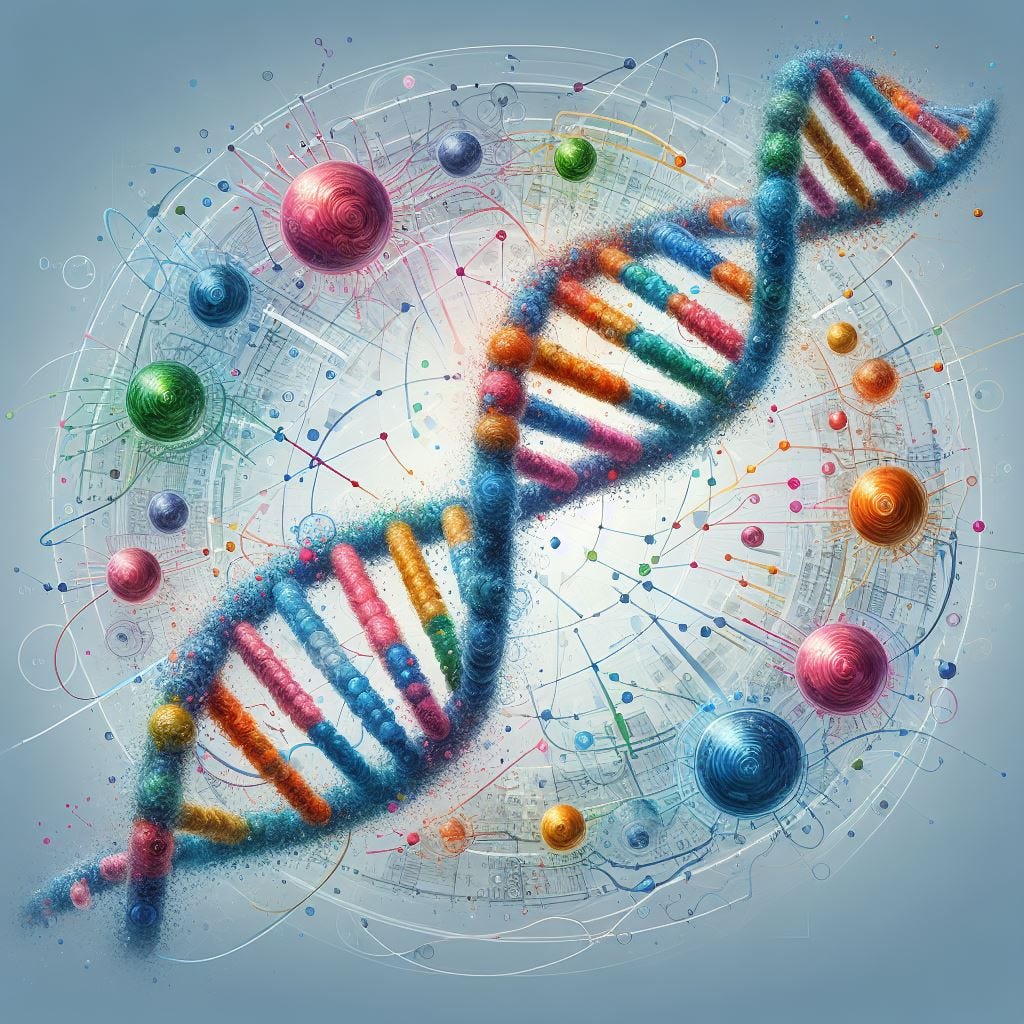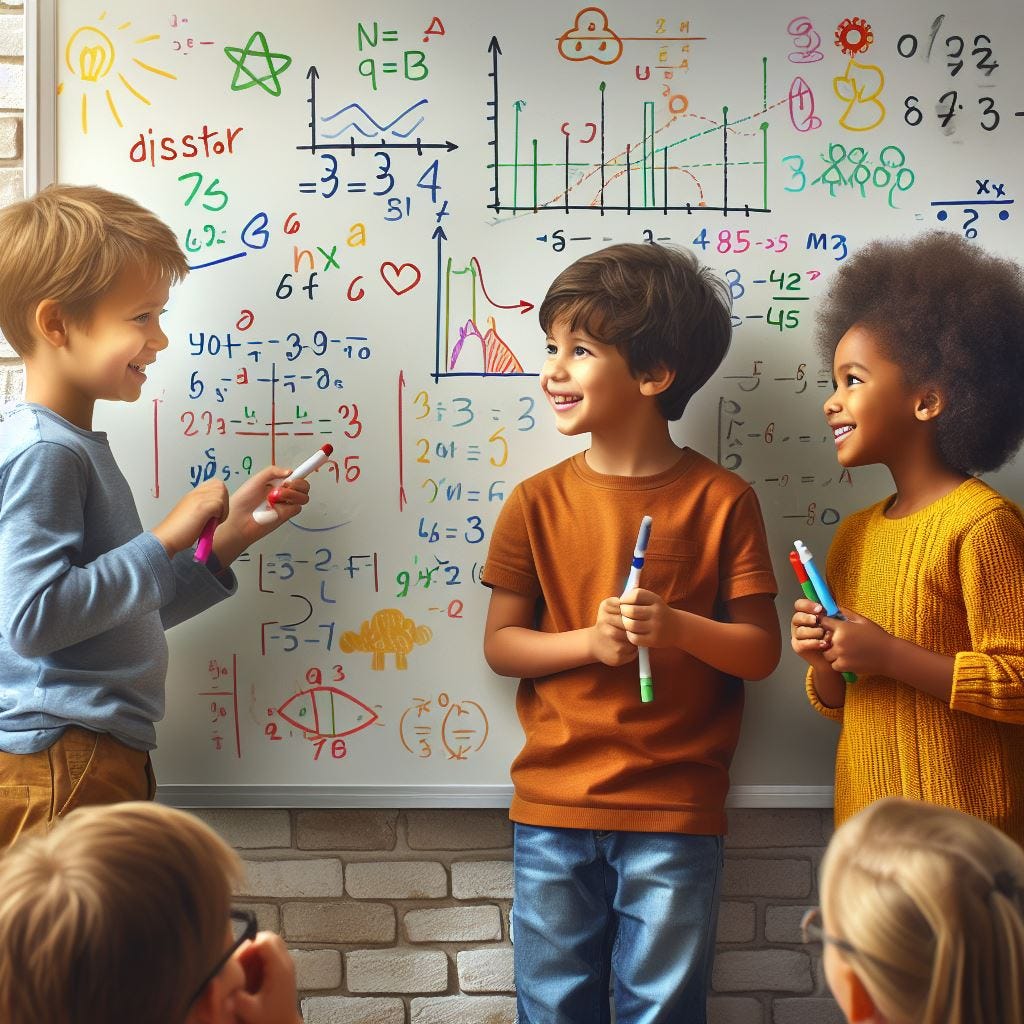Teaching, The New Engine of Our Evolution...
Evolution never stops. It is accelerating!
In my last post, I shared something I think is essential. It was the concept that, once you triage a decision and determine that it is not a career or life-threatening situation, you can rely on great rules of thumb to improve your decisions.
Don’t Do Stupid. If it can hurt you or kill you or others, even if there’s just a small chance, make a different choice.
Do Follow Your Own Rules. For the “Everything Else” choices, commit yourself to rules to help you have the best possible positions and outcomes. Make the in advance with great Rules of Thumb.
At the end of that post, I teased that this one would be about teaching.
When you have something exceptionally worthwhile to communicate, teaching is the most valuable skill set you can have.
We evolved over eons as changes slowly accumulated. Then, only an eyeblink ago, we added the ability to communicate. Evolution sped up from the pace of one small change per generation to today’s frenetic pace.
Education is the second way we transmit knowledge, but it is much faster than evolution. For example, it might have taken humans hundreds of generations to evolve the ability to survive polio without any bad effects. It would have taken hundreds more generations to spread that immunity to the entire population. With science, we developed and distributed immunity worldwide in a single generation.
This step has allowed us to inhabit so many niches in the world is the knowledge we accumulate and pass on. Physical changes that take hundreds or thousands of generations can’t compare with adaptations that take less than a generation. As communication technology (itself a product of science and knowledge) speeds up, evolution has found a way to go into warp speed. Teaching is the key.
The culture that embraces learning and adapting will be the culture that thrives.
Teaching is a process with the teacher acting as the enabler. Here’s my perspective.
Major steps of the process:
Select and curate the information (curriculum).
Break it down into bite-size chunks.
Build scaffolding to help students grasp the concepts by tying them to existing knowledge.
Engage the students and get them thinking about the concepts.
Deliver or present the information in various ways, including having the students seek it out. (Get the information from the book to the students.)
Students focus attention on the material and try to get a basic understanding. (Input)
Students practice with the material, connect it in different contexts, and gain proficiency in recalling and using it. (Processing)
Find out what you can do with it. (Output)
Check for understanding and mastery. Evaluate progress to reinforce learning where it’s needed.
Notice that items 6, 7, and 8 are entirely controlled by the students, not by the teacher. Learning is an active process. The student must actively participate to learn.
With all of that in mind, can a teacher teach a student who is not engaged? No.
Can a teacher make learning easier for students? Yes, if they are trying to learn.
Is it always a good thing to make learning easier? ***SURPRISE! *** The answer is No. Here’s why…
“Desirable Difficulty” in learning means that the extra effort to process and internalize hard (but not impossible) things results in better understanding and retention. This is because the extra effort reinforces the neural connection pathways that make memories, and we make more connections with other concepts, making this concept easier to recall in different circumstances. It seems that getting the concept into the student’s head is only part of the job. She must be able to recall and use the concepts to master them.
Best teacher in the world
The best teacher in the world cannot teach an unwilling student, except with tremendous effort and maybe subterfuge. However, a willing student is an autodidact (self-teaching) in the sense that it is up to the student, not the teacher, where to direct her attention and efforts.
“It is far better to render beings in your care competent than to protect them” - Jordan Peterson.
So, it follows that if the student is engaged and trying to learn and accepts responsibility to “put the material into the brain”, the student can be a better teacher than even the best teacher in the world. It also has some advantages because there just aren’t enough top-notch teachers to go around, especially when it comes to things that aren’t part of the curriculum.
When I teach, I make it my goal and explicit purpose to turn each of my students into people who can teach themselves. This means teaching them how to learn for themselves, even when there’s no teacher available.
So, for example, when working with students to learn a new throw (I taught elementary students and adults the Japanese martial art of Aikido as well as teaching business and technical subjects like Project Management to adults), I’d ask a question to get them thinking about the throw and getting them engaged, then demonstrate it at low speed so they could get a fundamental idea how to move. That was the scaffolding or on-ramp to help them go in the right direction. Then, practice, practice, practice. Try it from different angles, with different opponents, at a very low speed.
This puts the information into the brain of the student, but mastery of the technique requires the student to truly understand the feel of it and be able to fluidly and instantly call on it and use it in a variety of settings. (Sort of like the mastery of basic math I wish all of them had).
As I got older, my body wouldn’t allow me to demonstrate some things. From necessity, I’ve found that the best way to teach my students is to engage them and let them teach themselves.
I made it my goal to teach them how to learn, not just Aikido, but anything they want to learn by explicitly telling my kids that they were going to be the best teachers in the world (for themselves) and explaining my goal of teaching them enough that they could continue to learn on their own.
I know teaching kids how to learn for themselves was never explicitly part of the curriculum when I was in school. Critical thinking and decision science skills were not on the horizon. Discoveries of recent neuroscience (a word that wasn’t coined when I was in school) are starting to yield better ways to grapple with teaching and learning.
There’s lots of movement in the right direction. With people like the dedicated educators who are part of the “What School Could Be” community exploring better ways and working tirelessly to make truly effective education a reality.
So, to answer the question I posed in my last post “Who is the best teacher in the world?” When teaching yourself, you are. The only person who can put things into your mind, recall them, and use them is you. That leads me to the obvious next question, “Who is the best teacher in the world at teaching others?” I firmly believe that you can be that teacher if you can teach your students to learn “How to learn”.
In my next post, I’ll touch on some issues I have faced with my mental hygiene and some coping strategies.




